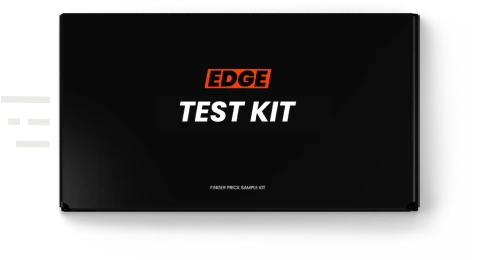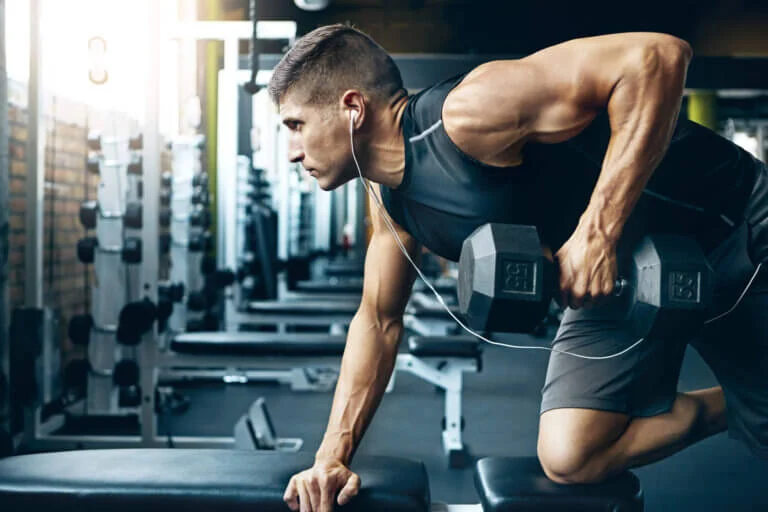
Nutrition
Vitamin D in Athletes
Edge Ambassador and long-time blood test advocate, Coach Joe Beer, looks at vitamin D. From what research tells us about this vitamin to a real-life story involving one of his athletes helped by Edge blood profiling.
5 mins read
Published on
July 9, 2024
Written by
Joe Beer
Share this article
Defining Vitamin D
Vitamin D can be obtained from foods, such as oily fish, the sunlight you receive on your skin and manufactured “fortified” foods or supplements.
Vitamin D has many key functions in the body but for athletes, its primary importance is bone development and the immune system.
With older athletes, and when athletes get older and can just become inactive, proper vitamin D intake is important as many studies show the elderly have lower vitamin D and suffer the most falls with serious fractures and breaks.
So what’s the problem for the active athlete? Well, many studies on vitamin D levels, as measured in the blood, suggest that significant proportions of the population, including athletes, are deficient to some extent. Forth carried out research into vitamin D levels in adults across the UK and found that more than half had levels below the optimal range.
Now, experts, governments and classification tables do not all agree on the exact number that defines a “deficiency” or what is adequate for athletes but there is a good yardstick as shown here[10]:
- Optimal: >75
- Adequate: 50-75
- Insufficient: 25-50
- Deficient: <25
Research
Starting around 2012 a UK group headed by Graeme Close looked at UK athletes and published two papers on vitamin D levels and the impact of supplementation[2][3]. The first study found that 62% of athletes had inadequate levels of vitamin D (<50 units) [2]. Over the next 8 weeks 5000IU vitamin D supplement was given to 30 athletes and 30 other subjects got a placebo.
At the end of the 8 weeks, the supplemented athletes had a statistically significant increase in vitamin D (see graph above, left most column). A follow-up study found that 20,000 and 40,000 IU given once per week elevated vitamin D to above 80 and 100 units in only 6 weeks from the original inadequate level of around 50 units [3]).
Here I must add that getting vitamin D levels up, as you can see from the graph, is not difficult. Though some have not seen any physical improvements in performance [2][4][5] others have [3][6].
Sist and co-workers assessed the effects of vitamin D supplementation on muscle strength and power in athletes [6]. Involving over 400 athletes across multiple studies, meta-analysis suggests that if vitamin D is below 75 units then supplementation can have a small effect on performance in lower and upper body strength.
Despite the huge numbers of vitamin D-deficient members of the population, the NHS advice [7] suggests only that the reader “should consider taking a daily supplement containing 10 micrograms (400IU) of vitamin D during the autumn and winter.” Adding “Between late March/early April to the end of September, most people can make all the vitamin D they need through sunlight on their skin and from a balanced diet[7].”
But then there’s the above data and real-life athletes, like James who I coach…
Real-Life Applications
James Cleland is a former rower turned triathlete who races from Sprint Distance (750m swim, 20k bike, 5k run) up to the Ironman (2.4 mile, 112 mile, 26.2 mile).

We look at the right training zones, sessions for each week, fuelling and the all-important bits of tech to go faster (like run shoe power measurement from Stryd and aerodynamic clothing from Nopinz).
As a coach I am always looking at the data we don’t know and if we do know it, is it optimal?
So we looked at James getting an Edge blood test back in 2019, as I said “Because I cannot see from the outside if you are deficient in anything and no one eats the perfect diet or lives the perfect lifestyle to get every nutrient right”. Early data was an eye-opener:
James recorded one of the lowest vitamin D levels from any athlete I had ever seen, a measly 32 units. Remember, we need at least 50 and many sports experts are pushing for >75-90 units to protect from injury.
So James started to supplement his diet, look at vitamin D-rich foods and generally be aware of the potential issues of inadequate vitamin D (i.e. bone formation compromised, immune system inadequacy and stress fractures).
Voila, four months later when we re-tested for a mid-season blood metric check-over (more on other data another time) the vitamin D was now over 100 (see graph, left-most columns).
Other data from Irish subjects such as Irish postmenopausal women during wintertime [8] and Gaelic Footballers [4] is also shown. Like the Close data [2][3] these illustrate many athletes and non-athletes are just not getting enough vitamin D-rich foods, sunshine or fortified foods and thus supplementation, as is being suggested by several governments, may be the way ahead, especially in winter in Northern latitudes, especially if you want optimal bone health and possibly strength too.
One final caution…

The data above from James Cleland, and others shows we can improve vitamin D levels. However, it will not just stay perfect and other factors of health or nutrition will eventually capture your focus. You can’t spin all your plates all of the time.
The graph below shows James’s vitamin D data trend 2019 through to 2023. After early corrective action, you can see the intervention of Covid which affected testing frequency, as well as the background training, triathlon race schedule and focus.
Voila, vitamin D dropped off the green “ideal” zone. With testing back in place we are back on track, but like many facets of health, fitness and performance, you cannot stop or you are already going backwards.
How can you increase your vit D levels?
- Sun worship?:
Small amounts of sun, when its available, can help raise your body’s vitamin D stores. However, there’s the balancing act with not too much which can be harmful. A mid-winter break to the sun (or a training camp) can be helpful as well as psychologically breaking the long winter down to manageable parts. - Eat smarter:
Vitamin D rich foods such as oily fish, can make a significant increase in vitamin D as shown by a small study led by the BBC(9). Eating 100g of oily fish, three times a week raised levels by approx 10 to 20 units in just three weeks. - Get measured:
If so many athletes are not hitting the mark of at least 50 units (ideally >75) I suggest the need for most of my athletes to get ForthEdge tested. What gets measured gets done. So lets see if we are close or way off with their bone health metrics, and then act accordingly. - Supplement:
Low dose vitamin D through winter is being seen a great for many, both active and sedentary, especially if adverse to fish or despite eating high vitamin D foods they fail to raise body stores. As low as 1000IU per day can lift the inadequate up to adequate.
Who is Joe Beer?
Coach Joe Beer has been in endurance sports since the mid 1980's from 10k’s and half marathons came the Bath Triathlon and eventually Escape from Alcatraz Triathlon, The Ironman World Championship in Kona Hawaii and the local fun-run pushing his son in a buggy.
Joe coaches and advises athletes of all levels from Ironman first timers to World Marathon podium elites. He has written for magazines for over 30 years, numerous websites and has had two books published (Need to Know Triathlon – Collins, Time Crunched Triathlon – Hale). He works with top brands and continues the multisport lifestyle: Be it a 65-mile Serpent Trail ultra run or short-sharp 5k ParkRuns - all with his partner Debbie, Joe continues to practice what he preaches (last vitamin D test data: 97.7).
Blood test for
Male Runner
18 Biomarkers Included
sports doctor review
Results in 2 working days
Flexible subscription
-
Harju, T. Et al (2012) Prevalence and novel risk factors for vitamin D insufficiency in elite athletes: systematic review and meta-analysis Eur J Nutr. 2022; 61(8): 3857–3871.
-
Close, G.L. et al (2012) Assessment of Vitamin D concentration in non-supplemented professional athletes and healthy adults during the winter months in the UK: implications for skeletal muscle function. J. Sports Sci. (1) 1-10.
-
Close, G.L et al (2013) The effects of vitamin D3 supplementation on serum total 25[OH]D concentration and physical performance: a randomised dose–response study. Br. J.Sports. Med. doi:10.1136/bjsports-2012-0917 35.
-
Todd, J.J. et al (2017) Vitamin D3 supplementation using an oral spray solution resolves deficiency but has no effect on VO2 max in Gaelic footballers: results from a randomised, double‐blind, placebo‐controlled trial. Eur J Nutr (2017) 56:1577–1587 DOI 10.1007/s00394-016-1202-4
-
Owens, D.J. et al. (2014) Vitamin D supplementation does not improve human skeletal muscle contractile properties in insufficient young males. Eur J Appl Physiol DOI 10.1007/s00421-014-2865-2
-
Hill, T.R. et al. (2006) Vitamin D status of 51–75-year-old Irish women: its determinants and impact on biochemical indices of bone turnover. Public Health Nutrition: 9(2), 225–233.
Read Next...
Get expert advice to help you improve your results.
Go to our knowledge center


